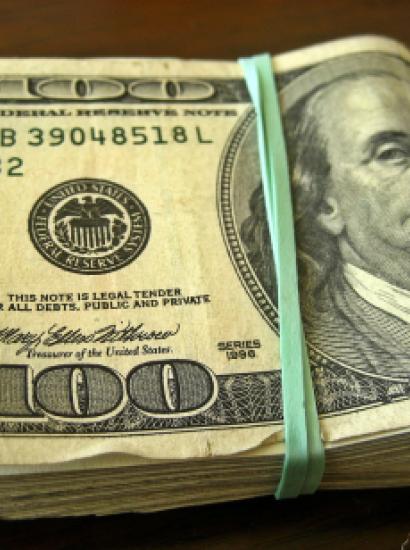- Economics
This past week, House Republicans released their comprehensive tax plan, which received decidedly mixed reviews. The plan contains many contentious provisions dealing with the individual income tax, which I shall pass by here to concentrate instead on the two most dramatic proposals: to cut the corporate tax rate from 35 percent to 20 percent, and to reduce the tax on bringing back assets now held overseas from current levels, which today run as high as 35 percent, to a one-time tax of 12 percent on cash and 5 percent on illiquid assets. The dispute on the first concerns the impact of tax reduction on working-class incomes. On the second matter, the question is whether the money returned will enrich only corporate shareholders or have additional collateral benefits.
Regarding the first point, Kevin Hassett, the head of the President’s Council of Economic Advisors, claims that these large tax cuts will pay for themselves, and predicts that middle-class families that make around $83,000 per year will earn additional wages of between $4,000 and $9,000 once the full benefits of the tax reductions are realized. Those gains do not flow primarily from a change in tax brackets, which are sufficiently low that it is hard to cut them further. Instead, Hassett claims the lion’s share of the gains will stem from the increased expenditures on new businesses and new capital assets, which will in turn stimulate wage growth. As a Trump administration white paper observes, wage growth has nowhere to go but up. Under the Obama administration, wage increases averaged only 0.3 percent per annum, notwithstanding the administration’s explicit effort to make wage growth the centerpiece of its overall economic agenda. Direct efforts can’t work when many wage earners pay little or no income taxes. So indirect measures intended to spur wage growth are the only game in town.
One obvious point in favor of the Trump administration’s position on corporate tax rates is that the United States has lagged in the international tax derby; its 35 percent corporate rate is far higher than the rates of its major competitors, which are on average between 10 and 22.5 percent lower. Those hefty rate differentials have sent many American corporations overseas, while inducing foreign investors to decrease their stakes in the American market. Corporate financiers are experts at calculating internal rates of return, making it highly unlikely that tax breaks of this magnitude will not alter their behavior. The hard question is not whether tax cuts will stimulate activity, but, empirically, what the size of that response will be.
To answer that question, the Trump administration’s white paper offers an econometric approach that compares the growth levels in foreign nations with high and low tax rates, where the gap in the tax rates between the two groups was close to 14 percent. In line with standard theory, it reports that lower taxes led to high rates of wage growth by about 4 percent, distributed across all wage levels, compared to a 1 percent wage growth rate for high tax countries, controlling for extraneous variables. The predictable inference from this data is that some portion, perhaps even more than half, of the money saved through tax reductions are passed back from the owners of capital to wage earners.
The same conclusion, the white paper argues, is reached by determining the elasticity (e.g. sensitivity) of wages to changes in the corporate tax rate. The overall range is fairly wide, but the evidence suggests “that a 1 percent change in corporate tax rates reduces worker wages by as much as 1 percent and as little as 0.1 percent.” And since 1984, overseas profits of U.S. multinational corporations have risen (erratically, to be sure) from about 40 percent to 70 percent, which is attributable, at least in part, to the high corporate tax environment in the United States.
The response to these arguments has been both indignant and incredulous. At the political level, Democratic Minority Leader Charles Schumer has insisted that most of the plan’s “direct benefits will flow to corporations and wealthy individuals.” House Minority Leader Nancy Pelosi scoffed that the bill is “a Ponzi scheme that corporate America will perpetuate on the American people.” The implicit assumption behind these statements is that the direct benefits are the only things that matter in the long run, so that the overall tax package is a “massive windfall” for the wealthy, which cannot be sustained without undermining the white paper.
At this point, a question arises: what will become of dollars brought back to the United States by American corporations? The pass-through of repatriated funds, some argue, will not take place. Evidence for this argument comes via a Bank of America and Merrill Lynch study that addresses the repatriation question. When asked what they would do with the repatriated cash from overseas, sixty-five percent of the corporate executives surveyed said that they would use that cash to pay down their debt, and forty percent said they would repurchase company stock. The combination of these two proposals has led well-known experts like Edward Kleinbard of the University of Southern California to insist that the motivation behind these debt reduction and repurchase strategies is to increase the share price, which in turn will drive up the compensation of key corporate officials.
Yet this argument is seriously incomplete. First, it is not a bad thing in itself to drive up share prices. Only stern egalitarians insist that matters are made worse when the rich get richer even if the poor do not get poorer. In traditional economic theory, a situation that leaves some people better off and no one worse off counts as a social improvement. And the point is even stronger given that the rich do not hold anything close to all the corporate shares; even if low-income people directly own only a small percentage of corporate shares, their individual retirement accounts and employee pension funds will prosper as well when overall share prices go up. Surely no one protests the current sharp increase in the Dow Jones index from 18,332 one year ago to 23,539 today, an annual rate of return of about 28.4 percent. Clearly the distributional consequences, whatever they may be, are swamped by the overall gains. Everyone should prefer a tax program that yields uneven benefits to everyone to a tax regime that reduces the income of the rich more substantially than it reduces the income of the poor.
The second objection to Kleinbard’s reasoning stems from its failure to address this simple question: What happens to the repatriated cash when corporate debt is repaid or corporate shares are repurchased? That money will not sit idle in some individual or corporate bank account. Instead it will be available to make new loans and new equity investments, and these are more likely to be made in the domestic economy if there is a more favorable tax regime. The supposedly nefarious actions of corporate CEOs do more than line their own pockets. They transfer the investment potential to a different class of stakeholders. Indeed, if these individuals and firms are smaller and more mobile than large public corporations, there could be a new round of innovation that comes from entrepreneurial activity. New business creation in the United States reached a 40-year low in 2016 in part because of high taxes and extensive regulations in capital and labor markets. The Trump administration’s prediction of corporate growth could well hold true with a new set of innovators.
Yet there is still the question of what should be done to increase the benefits that go to workers in the bottom half of the income distribution, given that wages remain stagnant today even as unemployment levels drop. The answer here comes in two parts. The best way to invigorate the low-wage portion of the labor market is to deregulate the labor market. Wealthy individuals have multiple ways in which to avoid taxes, which tend to reduce social wealth. Lower-income people are largely tied to paychecks, and have fewer employment options due to the growing regulations on the minimum wage, overtime pay, social security taxes, family leave policies, and health care. The Affordable Care Act’s “shared responsibility provisions,” for example, requires employers with 50 or more full-time-equivalent employees to provide health care insurance for those who work at least 30 hours per week—a policy that kills jobs. Rules like that impose hard constraints on the ability of small firms to expand. Tax reform will provide greater benefits to these people only when these fetters are cut, so that start-ups and established companies alike work in a business environment that fosters growth across the entire income spectrum.
















